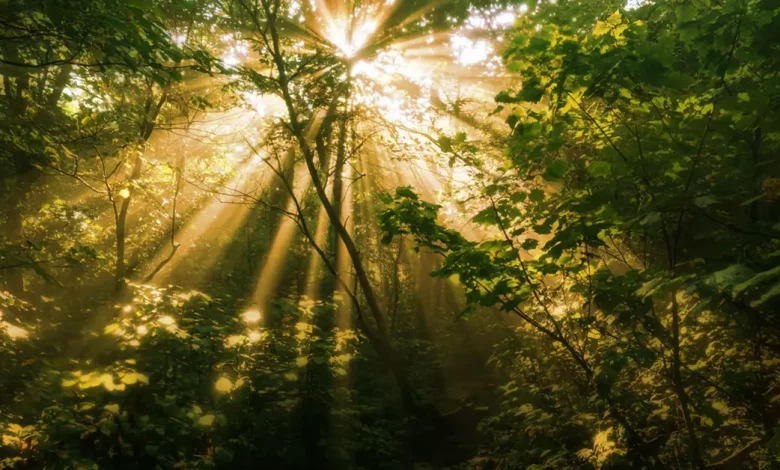Daily Current Affairs for UPSC
Gupteswar Forest- Biodiversity Heritage site
Syllabus: Environment and Ecology[GS Paper-3]

Context: The Gupteswar Forest in Odisha’s Koraput district has been recognized as the fourth Biodiversity-Heritage Site in the state, adding to its importance as it is located near the Gupteswar Shiva temple.
Key Points:
- The pristine Gupteswar Forest, located in the Koraput district of Odisha, has recently been declared a Biodiversity Heritage Site by the State Government.
- This designation marks it as the fourth Biodiversity-Heritage Site in the state. The significance of this declaration lies in the fact that it will strengthen the cultural connection between the local people and the forest while also ensuring the preservation of its valuable biodiversity.
- As a result, the state government has instructed the Odisha Biodiversity Board to formulate a comprehensive long-term plan that involves active participation from the local communities for the conservation and development of these sites.
- The ultimate goal is to utilise the forest for eco-tourism and the sustainable extraction of minor forest produce, thereby contributing to the livelihoods of the local population.
Gupteswar Forest:
- The Gupteswar Forest Biodiversity Heritage Site, which was recently declared, covers an expansive area of 350 hectares.
- It is located within the Dhondrakhol reserve forest, which falls under the jurisdiction of the Jeypore forest division in Koraput district.
- The site is situated near the ancient Gupteswar Shiva temple, highlighting the cultural and spiritual significance of the surrounding landscape.
- The reserve forest serves as a protective canopy, ensuring the preservation of the Biodiversity Heritage Site.
- The management of this site will be carried out by the Biodiversity Board, with a focus on sustainability and active involvement of the local community.
- The Board may establish specific geo-coordinates and boundaries as part of the conservation plan.
Biodiversity of the Forest:
- Gupteswar Wildlife Sanctuary shelter hippa with over 600 recorded by Wildlife Board of Odisha.
- We can completely list species that would include 188 different birds, 141 types of butterflies, 48 reptiles, 45 fish, 28 mammals, 18 amphibians and insects like spiders, scorpions and moths among the others.
- The forest diverse life is a clear demonstration of the fact that it is a very important living area.
- The Gupteswar Forest houses an abundance of endemic and endangered flora and fauna like mugger crocodiles, Kanger valley rock geckos, sacred grove bush frog and black bazas.
- Such cave dwellings in the forest, on the contrary, are home for 8 bat species where 2 of them are classified as near-threatened on the list of the IUCN.
- This category of bats contains the roundleaf bat, which consists of the intermediate and Roux’s horseshoe bat.
- The Biodiversity Board in their surveys discovered a diversity o species in the Gupteswar Forest that included plants like trees, shrubs, herbs, climbers and orchids.
- The area also has the right kind of plants that are endangered and medicinal. Furthermore, some of the herbs in the region are wild relatives of ginger and turmeric.
- The conservation of this critically endangered fauna aids in reducing the negative impacts on the environment and uplifting the health of the resident community.
Biodiversity heritage site
- Biodiversity Heritage Sites are special places in nature that are very delicate and have a lot of different kinds of plants and animals living there.
- These places are very important because they have species that only live there and nowhere else.
- They also have species that are rare or in danger of disappearing.
- Some of the plants and animals there are very special because they are the ancestors of ones that people use for food or farming.
- BHS also has old things from a long time ago that are important to people’s history or are really pretty to look at.
- These places are also important because they help keep different cultures alive.
Biodiversity Heritage Sites in India:
- India has a law called the Biological Diversity Act 2002 that helps protect special places in nature with lots of different plants and animals.
- These places are called Biodiversity Heritage Sites.
- The government works with local authorities to decide which places should be protected.
- These places have lots of different types of ecosystems and special plants and animals that can only be found there. They also help protect species that are in danger of disappearing.
Source: Times of India
Practice question:
Q. With reference to Biodiversity Heritage Sites in India consider the following statements:
- These are unique and sensitive ecosystems having rich biodiversity.
- These can be present in terrestrial as well as in coastal ecosystems.
- Biological Diversity Act, 2002 empowers only the central government to notify Biodiversity Heritage Sites in India.
Which of the statements given above are correct?
- 1 and 2 only
- 2 and 3 only
- 1 and 3 only
- 1, 2 and 3
Ans- “a”





.png)



